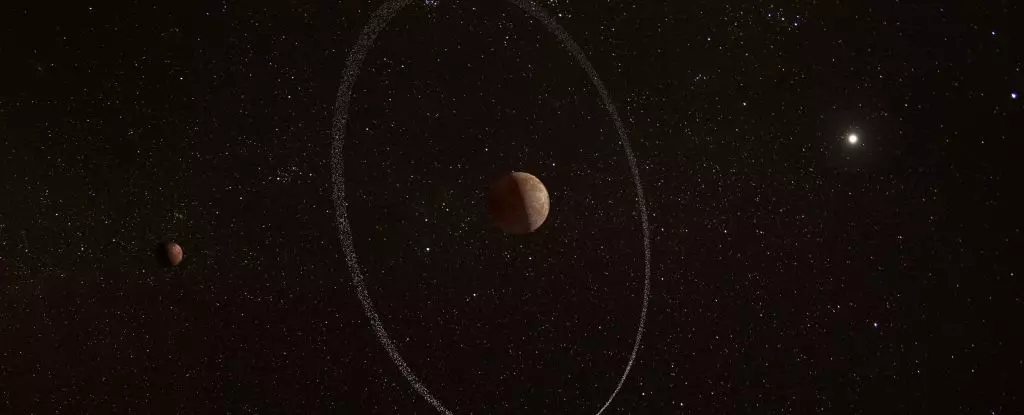The Solar System is home to a variety of moons, with different characteristics and compositions. However, despite the diversity of moons, there is one glaring absence – ringed moons. Surprisingly, out of the nearly 300 moons discovered so far, not a single one has rings. This is a strange anomaly considering that half of the planets in the Solar System have rings of dust and ice, and even some dwarf planets and asteroids have rings.
Astrophysicist Mario Sucerquia and his colleagues from the Adolfo Ibáñez University in Chile were puzzled by this absence of moon rings. They questioned why giant planets, centaurs, and trans-Neptunian objects have rings, but moons in the Solar System do not. This led them to explore potential dynamical reasons that might be preventing ring formation or long-term stability around moons.
Through N-body simulations, the researchers studied the gravitational interactions between moons, their host planets, and other celestial bodies to understand why ring formation around moons is elusive. They found that while moons generate raw material for rings, the gravitational environment of the planet and neighboring moons prevents the formation of rings around the moons themselves.
Contrary to their initial expectations, the simulations revealed that ring structures around isolated moons can be stable. Even in hostile gravitational environments with multiple moons and planets disturbing the rings, stability was maintained. The researchers were surprised by the beauty of these structures, such as gaps and waves, similar to those observed in Saturn’s rings.
There are features on Solar System moons that hint at the past existence of rings. Debris orbiting Saturn’s moon Rhea and the equatorial ridge on Saturn’s moon Iapetus suggest remnants of former ring systems. The researchers believe that factors like radiation pressure from the Sun, magnetic fields, internal heating, and magnetospheric plasma might have contributed to the disappearance of moon rings over time.
Further simulations incorporating additional parameters like radiation pressure and magnetic fields could offer more insights into the absence of moon rings in the Solar System. Studying moon features more closely for indications of past rings, such as Iapetus’ ridge, may provide clues to understanding this astronomical mystery.
While investigating moon rings in the Solar System, Sucerquia and his team are also exploring the possibility of ringed moons around alien worlds orbiting distant stars. The search for ringed moons beyond our Solar System opens up new possibilities for understanding the prevalence and significance of moon rings in the universe.
The absence of ringed moons in our Solar System raises intriguing questions about the formation and stability of celestial ring systems. By conducting comprehensive simulations and studying moon features, researchers are inching closer to unraveling the mystery of the missing moon rings. As we continue to explore the cosmos, the discovery of ringed moons around alien worlds could shed light on the tantalizing possibility of alternate lunar landscapes with rings.


Leave a Reply